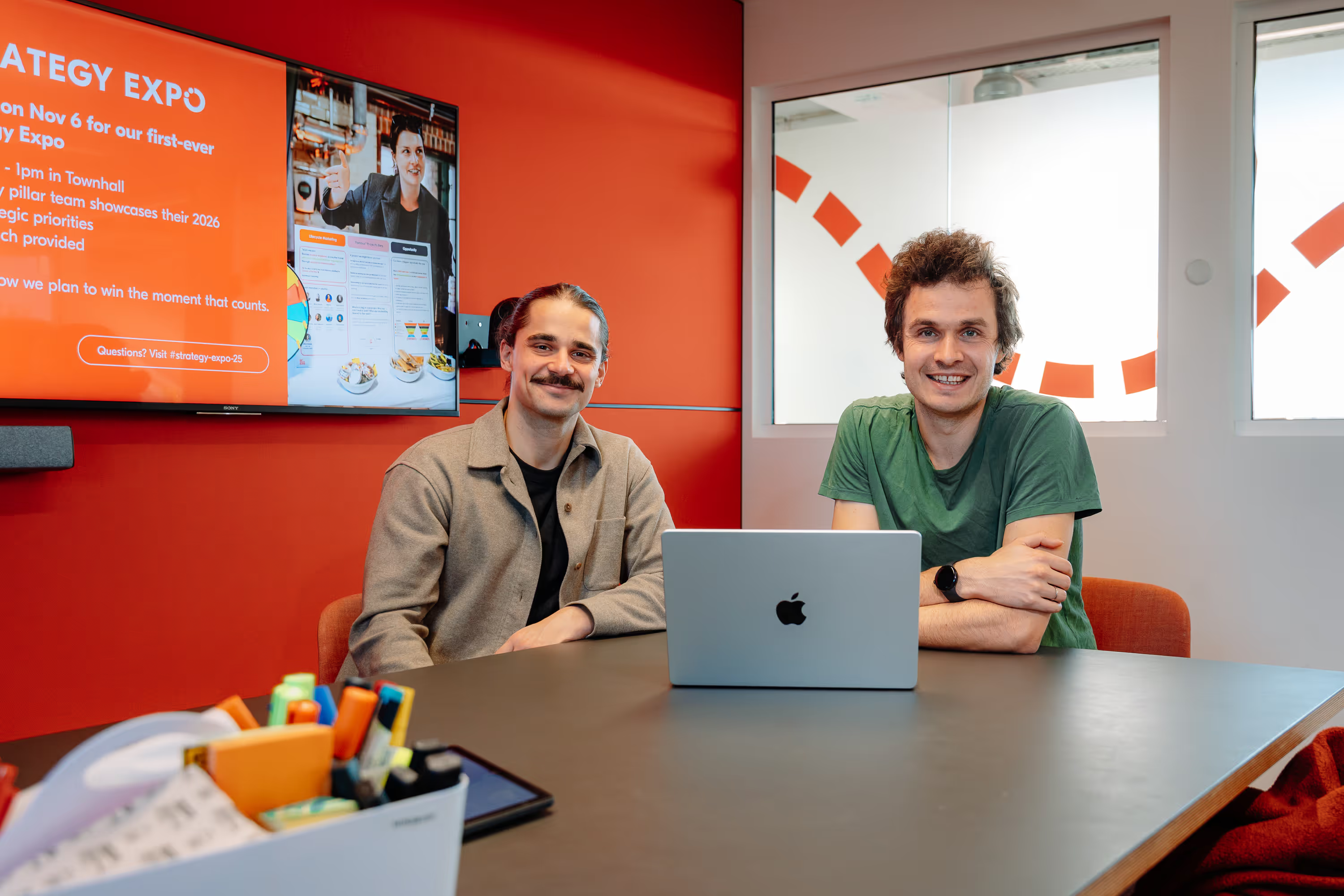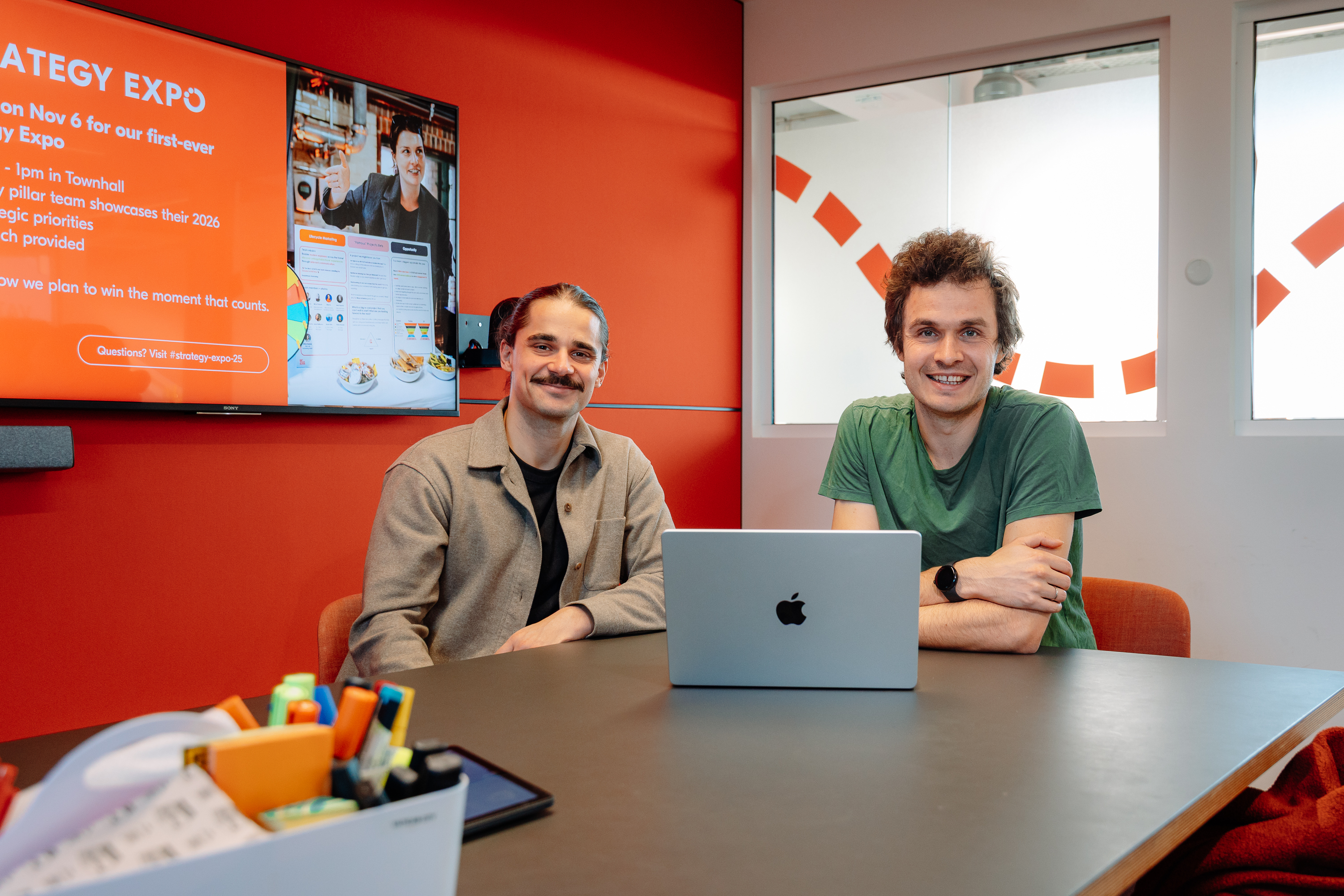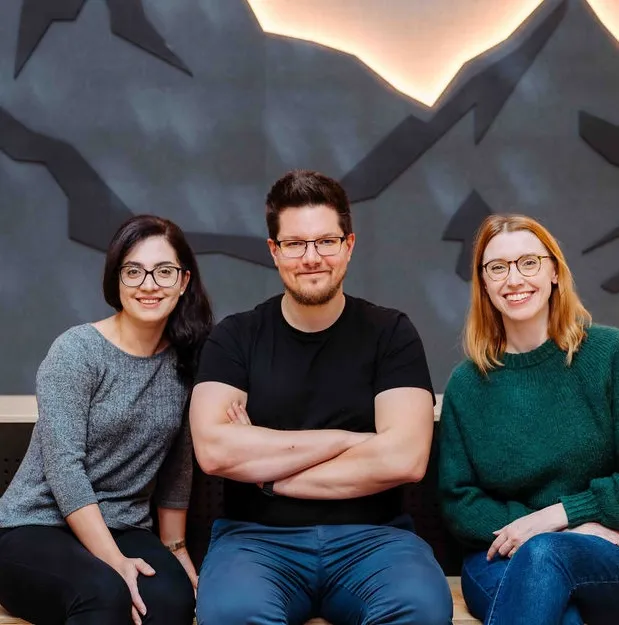Our UX Design Process and How We Adapt to Change
He reveals how the Product and Design department has adapted their approach for social distancing and which product design tools they use.
.avif)
Key takeaways:
Armando Affonso, senior product designer, gives a play-by-play of our design process, from research to prototype to launch.
He reveals how the Product and Design department has adapted their approach for social distancing and which product design tools they use. Armando shares how we're evolving to the traveler's new needs in preparation for the era of social distancing.
I had a good feeling about the company's approach to the product design process even before I joined because my interview and onboarding journey was such a smooth experience: From the first email from the talent sourcer to speaking to the recruiter, to the onsite interview, and getting relocated to Berlin — the whole candidate experience was incredibly well-thought-out. The onboarding team even provided me with gift cards to experience our tours first hand.
As a product designer who frequently maps out customer journeys, this showed me that the company really has empathy, and I would soon see how this translates to designing for the customer journey.
What's it like working in the Product and Design department?
At GetYourGuide, our Product and Design department, as the name suggests, is split in two organs; the Product Management team and UX team. The UX team is further broken down into Product Design and UX Research & Writing.
These individuals in their specialties are all distributed throughout the company and focus on different projects that require UX design, research, or writing. These projects are known as missions, and we deliver our work within those teams.
As a senior product designer, I work with the Search and Discovery mission team. Mission teams, or squads, work on different parts of our marketplace travel platform. Our company has over 12 of these cross-functional teams. Each team comprises of specialists such as a UX writer, a backend engineer, a frontend engineer, a UX researcher, and a product manager who all work towards a common goal.
Once we've understood the types of travelers we have, we try to understand their traveling behavior. What's their journey? Searching on GetYourGuide is just a small part of it.
My mission team’s goal is to make it easier for travelers to search for and find tours and activities they're interested in on our platform. Working this way means we're lean and agile because we don't have many layers of approval, that's why we can move quickly to other configurations.
The UX design trinity: the researcher, the writer, and the designer
Product design actually doesn't start at design. It begins with a researcher, writer, and designer. There's no single product development process we use across the company, each mission team has a different one, and we're going to dive into how it works on the Discovery team.
We're asking, "Imagine when the pandemic ends, and you go back to your normal routine, how will you travel, and how would you look for an activity?"
The one thing that every mission team has in common is we all begin at the same question:
What is the user problem we are trying to solve?
Our researchers do an excellent job of quantitative and qualitative research and analysis to find the customer pain points. Here's an example:
We sell tickets, tours, activities, and attractions. One problem users have is finding tickets that are right for them. Are they a family of four or a solo traveler? Each traveler has different needs. So we frame the question and goal like this:
Problem: As a user, I want to find activities that match my needs and preferences.
Goal: Make results for each destination easier to skim. This will make the process of choosing tours and activities easier and more effortless for travelers.
So we need to think deeply about personas, highlight the budget options, or think about whether they require more exclusivity in their experience. We have to make the experience straightforward for all types of travelers within each category. For example, some travelers plan ahead of time and others look for activities spontaneously after arriving at the destination.
It's best practice to include our UX writer from the beginning of the design process. It's not uncommon for other companies to throw copy in at the end when the fully designed product is complete.
Once we've understood the types of travelers we have, we try to understand their traveling behavior. What's their journey? Searching on GetYourGuide is just a small part of it. The customer is probably thinking about their flight tickets, hotels, and the destination itself.
We have to be sure when GetYourGuide appears in their journey and how to incorporate ourselves into their end-to-end traveling process. Here is an example of how an end-to-end journey could look for travelers:
- Dreaming about the destination
- Booking flights and hotels
- Traveling to the destination
- Arriving at the airport
- Booking activities for the place you're in
- Departing from the airport
- Coming home and reflecting on the travel experience
Conducting UX research : Before and after COVID-19
We examine the customer pain points of each step. We put a ton of research into understanding the problem, including interviews with customers, both onsite in the location and online. Social distancing regulations and travel bans changed the way we conduct research. Here’s a look at how we did it before and after:
Before COVID-19
Surveying in the destination
Our researchers would go to the destination and interview customers on their trips. We might survey a Hop-on Hop-off Bus stop and ask questions like, "What did you expect to see?" or "How was your experience?" In that case, we are trying to understand the pain point of the on-trip experience.
Surveying locally
Before social distancing regulations, we would also give test customers vouchers to experience a tour before inviting them to our office. After the experience, we'd hold interviews — both in-person and remotely depending on availability — to ask them about their trip and their travel behavior. We have a designated research operations team member — they screen participants and schedule them for interviews.
Considering how much travel will change after COVID-19-restrictions lift, we are changing the way we pose questions to our testers.
After COVID-19
Considering how much travel is expected to change after COVID-19-restrictions lift, we are changing the way we pose questions to our testers. Instead of asking, "Would you go to the Louvre?" We're asking, "Imagine when the pandemic ends, and you go back to your normal routine, how will you travel, and how would you look for an activity?"
We know travel behavior is going to change and we are adapting our research methodology to all of this.
As part of our research activities, we look at customer experience on the app and web interface as well as how we design our physical tours. We occasionally run workshops and do research evaluations, such as heuristic evaluations, to evaluate our platform's current status.
Hypothesis-driven product design
Once we have an idea of pain points, we write a hypothesis as a starting point. Here's an example and how it evolves.
- Hypothesis: Users can't find tours and attractions with audio guides included on our website.
- After research, we realize that the audio guide filter was hidden on the website.
- Refine the hypothesis: We believe that if we created a new, clearer search category for audio guide filters, users would be able to find it easier. As a result, we will have a more significant conversion for tickets, attractions with audio guides.
Designing: New prototyping tools and remote workshops
Since we all started working from home, we are really using the collaboration features with a software called Figma. It's much more collaborative than the product design tools we were using before.
On Figma, several designers can look at the same live design and add comments (it's like Google docs, but for design). Some designers in the team use them for internal alignments and workshops.
Our design workshops have changed as well. Instead of being in the same room, we are doing online workshops with a MIRO digital whiteboard. The software even has digital post-it notes. Everyone's using this tool, and one benefit is that it can handle multiple participants — normally, we can fit only so many people into a room with a physical whiteboard.
The best part is, we don't have to take a picture of the post-it notes and upload them. We can just save it. This helps us do our jobs remotely.
UX writing: Tying it all together
It's best practice to include our UX writer from the beginning of the design process. It's not uncommon for other companies to throw copy in at the end when the fully designed product is complete.
UX designers and writers collaborate from the start to make sure the Design team keeps the copy and content in mind. The text sets the layout of the surroundings and how it appears.
For example, sometimes copy is longer than expected, we try to work around it. The UX writers are not just copywriters. They don't just do UI copy — they help with the information architecture, the localization, and the content on the page.
Their work can range from microcopy on a 404 page, "e.g., Lost your way? It seems the page you're looking for isn't here" to button text like "Book now" to user interface (UI) work. Some of these can be either very straight forward or very tricky. Before shipping designs for usability testing, and before designing all the buttons, we have to all align as a team.
Our UX writers know a lot about other team dependencies, e.g., How much more space do we need for this other language? When a UX writer looks at a page, they are aware of every single piece of text that goes onto our website and app.
They also have to deal with currencies and dates in different languages. The writers have written and regularly updated standardized style guides on how to present our communications consistently, e.g., date and time formats, punctuation, and so on. Once we have a prototype, we will move to usability and A/B testing.
Usability testing in the age of social distancing
Before social distancing, we would do in-office usability tests where we would invite customers to our office, display prototypes on phones, and they would experience it in the office. Now we do 100% remote usability testing.
We send prototype links to participants, and they install an app on their phone that lets the researcher record the session. Through this app, we can see where they clicked and how they navigated. We simultaneously do a Zoom call where we analyze their facial expressions when asked questions. We could see this simultaneously with their user behavior on the prototype interface. This new remote approach worked surprisingly well.
We may be doing more remote testing in the future. It takes less time than scheduling 10 participants to come into the physical office at the same time. Another benefit of remote usability testing is that we can reach customers around the globe.
Working with a live prototype: test, iterate, repeat
Once the feature is live on the site, we monitor its performance in a few analytics tools, such as Google Analytics and a business intelligence tool called Looker. A part of our product manager's job is to look at the data and measure how the new feature is performing.
All employees can create their own queries and see all the data on the website. Apart from Looker, we have other analytics tools that help us to understand and monitor the whole product.
When we launch new features, we keep monitoring the website for some weeks, until we get quantitative insights about that feature. That helps us to iterate if something is not performing as expected.
We look at, for example, the bounce rate. If lots of users go to the landing page for Versailles and close it immediately without interacting with the page, we have to look into why that's happening. It could be text on the interface; it could be a bug — the data can help us understand why this is happening. From here, we continue to test and improve new features as we work on new hypotheses.
How all designers across all missions align
What I enjoy about working here is that everyone who works with UX on each mission team gathers to discuss every two weeks. This is where we praise and critique one another's designs and give feedback on processes. It's a way to make sure we are all on the same page.
During my onsite job interview, I was invited to one of these sessions as a candidate. This incredibly honest, human, and productive approach to design was one of the reasons I knew I'd accept the job if it was offered to me.
For updates on our open positions, check out our Career page.


.jpg)




